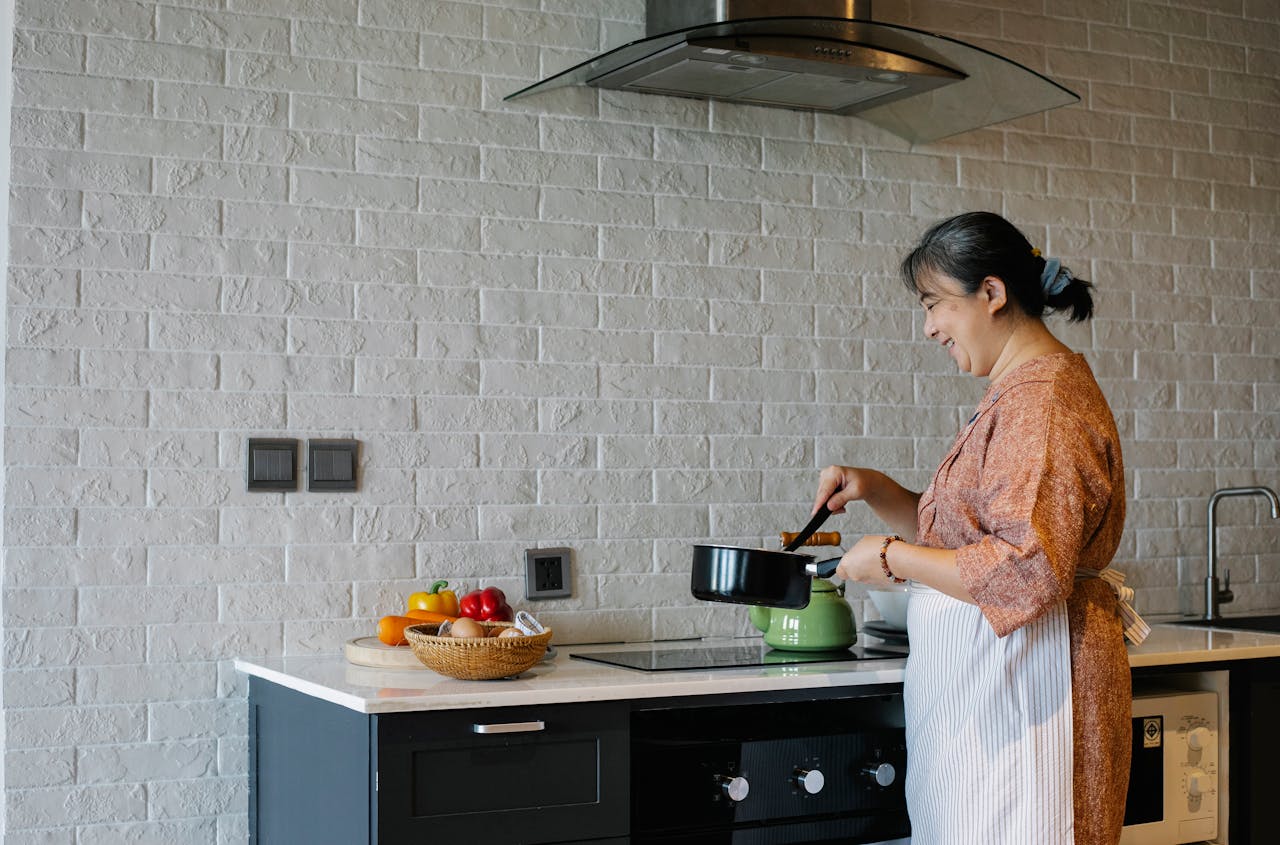Whether you are remodelling your kitchen or simply replacing an old cooker hood, there are several factors you need to consider. This guide is specifically designed to help you understand the key points to consider when buying a kitchen hood in the UK.
The Purpose of a Kitchen Hood
Before diving into the buying guide, it’s crucial to understand the role a hood plays. In the simplest terms, a kitchen hood is an appliance that helps to manage the air quality in your kitchen. When you cook, various particles and substances, including smoke, grease, and odours, are released into the air. The hood’s extraction system pulls these particles and substances out of the air and either filters them or vents them outside.
In parallel : Which are the best UK-based online stores for kitchen supplies?
This process not only helps to maintain a clean and fresh kitchen environment but also protects your health. Long-term exposure to cooking fumes can lead to respiratory issues, among other health problems. Therefore, having a hood in your kitchen is not just a matter of keeping the space clean but also ensuring your wellbeing.
Types of Kitchen Hoods
There are different types of hoods available in the UK, each with its advantages and features. Understanding these will make it easier for you to decide which type is ideal for your kitchen.
Also to discover : Which are the best UK-based online stores for kitchen supplies?
Wall Hoods
These are the most common type of hoods in the UK. They are installed on the wall above the hob, hence the name. Wall hoods come in different designs, including the traditional style and chimney style. The latter is taller and extends to the ceiling, providing a larger extraction area.
Island Hoods
As implied by the name, island hoods are designed for kitchens with an island. The hood is suspended from the ceiling above the island, providing an extraction zone over the hob located on the island. Island hoods are usually larger than wall hoods and often come with a more modern and stylish design.
Integrated Hoods
These hoods are built into the kitchen units, providing a seamless look. They are an excellent choice if you prefer a minimalist kitchen design. Despite their concealed installation, integrated hoods offer as efficient air extraction as other types.
Factors to Consider When Choosing a Kitchen Hood
The type of hood you choose will largely depend on your kitchen layout and personal preference. However, there are other factors that you need to take into account.
Size
The size of the hood should correspond to the size of your hob. Ideally, the hood should be as wide or wider than the hob to ensure efficient extraction of cooking fumes and particles.
Extraction Rate
The extraction rate refers to the amount of air that the hood can remove in an hour. The higher the rate, the more efficient the hood is at clearing the air. When choosing a hood, consider your cooking habits. If you cook frequently or prepare large meals, you will probably need a hood with a high extraction rate.
Noise Level
While hoods are great at maintaining a clean and fresh kitchen environment, they can be noisy. Therefore, you need to consider the noise level when choosing a hood. Most hoods will list their noise level in decibels (dB) on the product specifications. A hood with a noise level of 60dB or less is generally acceptable.
Kitchen Hood Filters
Lastly, let’s talk about filters. There are two main types of filters used in cooker hoods – grease filters and charcoal filters.
Grease Filters
As the name suggests, these filters trap grease particles that are released during cooking. They are usually made of metal and are reusable. You can wash them in the dishwasher when they become dirty.
Charcoal Filters
Charcoal filters are used in recirculating hoods, which do not vent the extracted air outside. Instead, they filter the air and release it back into the kitchen. Charcoal filters are responsible for removing odours from the air. Unlike grease filters, charcoal filters are not washable or reusable. You will need to replace them every few months to ensure the effective operation of your hood.
Choosing a kitchen hood can seem like a daunting task, but with the right information, it becomes manageable. This guide provides the essential points you need to consider when buying a kitchen hood in the UK. Remember, the right hood for you is one that fits into your kitchen design, meets your cooking needs, and falls within your budget. Happy shopping!
Installation and Maintenance of Kitchen Hoods
Once you’ve decided on the type and size of your kitchen hood, it’s time to think about its installation and subsequent maintenance. Both these aspects are crucial in ensuring the longevity of your hood and its continued efficiency in maintaining your air quality.
Installation is typically dependent on the type of hood chosen. For example, wall mounted hoods and chimney hoods require a certain amount of wall space and height clearance. It’s important to consult the manufacturer’s buying guide or a professional to ensure safe and proper installation. If you have opted for a recirculating hood or an integrated hood, you may need professional help for a seamless installation. Make sure that your installer understands the UK standards for electrical installations in the kitchen.
Maintenance of cooker hoods primarily involves regular cleaning and replacement of filters. The grease filter should be cleaned regularly, as a build-up can affect the extraction efficiency of the hood. Most cooker hoods designed for the UK market come with dishwasher-friendly metallic grease filters for easy cleaning.
The charcoal filters, however, are not reusable and need to be replaced every 3 to 6 months depending on usage, to maintain the hood’s odour absorption efficiency. For recirculating hoods, the replacement of charcoal filters is especially important as this is the main line of defence against cooking smells.
Conclusion
Choosing the right kitchen hood is essential for maintaining a clean and healthy cooking environment. The choice depends on your kitchen layout, cooking habits, and aesthetic preferences. From the common wall hoods and stylish island hoods to the discreet integrated hoods, the UK market offers a variety of options to suit every kitchen.
Remember, the size and extraction rate of the hood are crucial factors that can greatly affect its performance. Consider the noise level too, for a comfortable cooking experience. Maintenance of the hood, involving regular cleaning of grease filters and replacement of charcoal filters, will ensure its longevity and efficiency.
We hope that this hood buying guide has provided you with the necessary understanding to make an informed choice. Whether you are a fan of the traditional cooker hood or prefer a modern extractor fan, remember that its primary role is to keep your kitchen air clean and your health protected. Make your choice wisely and happy cooking!






